According provided by Nikon ED AF-S Nikkor 70-300mm 1: 4.5-5.6G VR IF SWM lens is huge thanks to the store www.fotika.com.uawhere you can find a huge number of different used photographic equipment, including similar lenses.
Nikon ED AF-S Nikkor 70-300mm 1: 4.5-5.6G VR IF SWM (short for Nikon 70-300 VR) is the classic telephoto zoom lens for Nikon FX full-frame cameras. Such zooms are in great demand for a wide range of photographic tasks. In 2006, Nikon 70-300 VR replaced the older model. Nikon ED AF Nikkor 70-300mm 1: 4-5.6D and for some time it was produced along with an add-on lens Nikon AF Nikkor 70-300mm 1: 4-5.6G. At the time of writing this review (summer 2015), the Nikon 70-300 VR is the only manufactured native telephoto lens of its kind. I think the Nikon 70-300 VR is the best option for anyone who does not want to mess with the more expensive and heavy professional class telephoto lenses of the 70 (80) -200 / 2.8.
All Original Similar Nikon FX Telephoto Lenses
Below is a list of all Nikon Nikkor telephoto lenses without high aperture and with auto focus support:
- Nikon AF Nikkor 70-210mm 1: 4, 1986-1987
- Nikon AF Nikkor 70-210mm 1:4-5.6, 1987-1993
- Nikon AF Nikkor 75-300mm 1:4.5-5.6, 1989-1998
- Nikon AF Nikkor 80-200mm 1:4.5-5.6D, 1991-1999
- Nikon AF Nikkor 70-210mm 1:4-5.6D, 1993-2000
- Nikon AF Micro Nikkor 70-180mm 1: 4.5-5.6D ED, 1997-2005
- Nikon AF Nikkor 75-240mm 1:4.5-5.6D, 1999-2000
- Nikon AF Nikkor 70-300mm 1:4-5.6D ED, 1998-2006
- Nikon AF Nikkor 70-300mm 1:4-5.6D, 1998-2006 (?)
- Nikon AF Nikkor 70-300mm 1:4-5.6G, from 2000 to 2014, black or silver
- Nikon AF S Nikkor 70-300mm 1:4.5-5.6G ED VR IF SWM, from 2006 to 2017
- Nikon AF S Nikkor 70-200mm 1: 4G ED SWM VR IF N Nano Crystal Coat, from 2012 to the present day
- Nikon AF-P Nikkor 70-300mm 1:4.5-5.6E VR ED, 2017 to present
The names of the lenses are indicated according to their spelling on the case.
Main technical characteristics of Nikon ED AF-S Nikkor 70-300mm 1: 4.5-5.6G VR IF SWM:
| Review Instance Name | Nikon ED AF-S Nikkor 70-300mm 1: 4.5-5.6G VR IF SWM Ø 67 made in Thailand US2603898 |
| Basic properties |
|
| Front Filter Diameter | 67 mm, plastic thread for filters |
| Focal length | 70-300 mm EGF for Nikon DX cameras is 105-450 mm |
| Zoom ratio | 4.3 x |
| Designed by | for digital cameras Nikon FX |
| Number of aperture blades | 9 rounded petals |
| Tags | focusing distance in meters and feet, focal lengths for 70, 100, 135, 200, 300 mm, bayonet mount mark, hood mount mark, mark for working in the infrared spectrum |
| Diaphragm | 70 mm from F / 4.5 to F / 32. At 300 mm from F / 5.6 to F / 40. The lens does not have an aperture ring (G - lens type) |
| MDF (minimum focusing distance) | 1.5 m over the entire range of focal lengths, maximum magnification ratio 1: 4 |
| The weight | 745 g |
| Optical design | 17 elements in 12 groups. The circuit includes 2 low dispersion element (shown in yellow in the optical diagram). The presence of such elements is indicated on the case with the abbreviation 'ED'. The red frame indicates the lenses included in the stabilizer.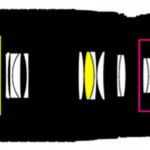 The image of the optical circuit is clickable. The image of the optical circuit is clickable. |
| Lens hood | Nikon HB-36 |
| Manufacturer country | Made in thailand |
| Period | From August 9, 2006 to July 11, 2017. Subsequently replaced by Nikon VR ED AF-P NIKKOR 70-300mm 1: 4.5-5.6E. |
| Instruction (multilingual) | Download, mirror 1 |
| Price |
In 2012, a more advanced model of this telephoto lens came out - Nikon N AF-S Nikkor 70-200mm 1: 4G ED SWM VR IF Nano Crystal Coat.
Assembly
All Nikon 70-300 VR lenses come from Thailand. To the touch the lens is quite pleasant and weighty, its weight is a little more than 700 grams. On cameras Nikon D700 и Fujifilm FinePix S5 Pro its weight does not cause any discomfort.
Nikon 70-300 VR uses 67 mm standard filters. The zoom ring is very wide, rubberized and comfortable, it’s much more convenient to rotate it than, say, the model Nikon 28-300mm 1: 3.5-5.6G VR... The focusing ring is plastic. Nikon 70-300 VR has metal bayonet mount. Almost the entire outer rim of the case is made of plastic. The retractable frame of the case consists of one section and is quite durable to the touch. As for the amateur lens, the Nikon 70-300 VR has good build quality. At one time, I used the Nikon 70-300 VR for a year, and at the same time, the lens did not begin to suffer from the spontaneous extension of its trunk.
There is a mark on the case for quick installation of the hood. The lens uses a plastic hood HB-36, which is fixed in special grooves located near the front lens of the lens. The hood can be installed in the opposite direction for transportation. In this position, it is somewhat inconvenient to use the zoom. While changing the focal length, the lens hood moves with the trunk of the lens.
On the bayonet side, the lens has a special rubber gasket, which serves to protect the lens from dust and moisture. On official sources, accurate confirmation that the Nikon 70-300 VR is a dustproof and waterproof lens cannot be found. At the same time, I am inclined to believe that because of this rubber seal, the lens still has at least some basic dust protection.
When changing the focal length, the rear lens moves in the middle of the lens body like a pump - it draws in and pushes out air. This behavior of the rear lens is called 'vacuum cleaner effect', which can increase the amount of dust that accumulates in the camera. It is funny that when zooming from 70 to 100 mm, the rear lens does not move, the movement occurs only in the range from 100 to 300 mm.
Diaphragm
Diaphragm lens consists of 9 rounded petalsthat form a smooth hole. The aperture range is available from F / 4.5-5.6 to F / 32-F / 40. Unfortunately, compared to the previous version of the lens - Nikon ED AF Nikkor 70-300mm 1: 4-5.6D, the new Nikon 70-300 VR has lost some of its aperture and now uses F / 4.5 instead of F / 4, which is about 1.27 less.
There are marks with a focal length on the zoom ring, the following is a list with the minimum numbers F available for these marks:
- 70 mm - F / 4.5
- 100 mm - F / 4.5
- 135 mm - F / 4.8
- 200 mm - F / 5.3
- 300 mm - F / 5.6
Stabilizer
The Nikon 70-300 VR has a VR stabilizer (Vibration Reduction), which according to the instructions can compensate up to 4 stops by shutter speed. In numerical terms, this means that you can shoot at shutter speeds 16 times longer than what a lens without a stabilizer requires. The stabilization system of the Nikon 70-300 VR refers to second generation (VR II).
The instructions for the Nikon 70-300 VR lens indicate 4 stops (Nikon measurements), and on the official website only 2.5 stops (measured by CIPA). In any case, the stabilizer works well.
To enable / disable the stabilizer on the lens there 'VR ON / OFF' switch. There is a 'Normal / Active' switch to select a mode. The stabilizer can operate in two modes: 'Normal' and 'Active'.
- 'Normal' mode designed for most scenes and avoids movement when camera shake. Theoretically, the 'Normal' mode can still track the movement of the camera to create panoramas.
- Active Mode most suitable for shooting when the camera can not only shake, but also move in different directions. Most often, it is advised to use this mode when shooting in motion.
I managed to take pictures of stationary objects, without blur and hard work, at 300 mm focal length and 1/40 second. The stabilizer works well, but it does not compare with the stabilizer in newer models, such as Nikon 70-200 / 4G.
When the stabilizer is working, the image in the viewfinder can jerk, this is due to the methodology of the vibration reduction system, which tries to keep the picture without stirring, but when the lens deviates greatly from the 'target', the stabilizer abruptly switches to a new scene. During its operation, the stabilizer creates a barely audible hum.
Focusing
Nikon 70-300 VR focuses quietly enough thanks to 'SWM'-motor (Silent Wbird Motor - quiet wave motor) and refers to the lens'AF S'type (with built-in motor focusing), and therefore it will automatically focus on any Nikon digital SLR camera.
The minimum focusing distance is 1.5 meters, while you can shoot Macro with 1: 4.5 magnification. Nikon Nikon 70-300 VR has a window with a scale of distances in meters and feet. There is no IPIG scale, but there is a mark for 70 mm focal length for working in the infrared spectrum. In the instructions, you can find deviations during photography in the infrared spectrum and for other values of the focal length.
Nikon 70-300 VR focuses fast. Focusing speed does not cause any complaints, although inferior to more expensive lenses. On cameras Nikon D700 and and Fujifilm FinePix S5 Pro the lens focuses tenaciously (does not lose objects from the zone of sharpness). Only sometimes, at 300 mm of focal length, the lens and camera try to refocus.
During focusing, the front and rear lenses remain stationary, as the lens uses internal focusthat is indicated on the case by the letters'IF'-'Iinternal Focus' - 'Inner Focus'. During zooming, the front lens leans forward but does not rotate. Thus, it is possible to use any filters without problems, for example polarizing or gradient.
On the lens housing you can find focus switch 'M / A - M'. In the 'M / A' position, auto focus works with constant manual focus priority. The 'M / A' mode is very convenient and useful - for manual focusing or focus correction, you do not need to additionally switch the lens to the 'M' mode. As soon as you start focusing manually using the 'M / A' mode, the auto focus is immediately turned off, and the lens continues to listen to your hands until you press the focus activation button again.
The focus ring rotates to 180 degreesManual focus is easy.
Nikon 70-300 VR suffers greatly from the 'Focus Breathing' effect - changing the viewing angle when focusing.
Compatibility and Features
The lens will work correctly at all Nikon digital SLR cameras.
When using the built-in flash, especially with the lens hood installed, photos may have a black shadow.
EGF lens for Nikon DX cameras is 105-450mm. An analogue of the Nikon 70-300 VR for Nikon DX cameras can be considered Nikon DX AF-S Nikkor 55-200mm 1: 4-5.6G ED VR IF SWM and Nikon DX AF-S Nikkor 55-200mm 1: 4-5.6G ED VR II. This Nikon 70-300 VR works wonderfully on cropped cameras and does not cause much inconvenience due to recalculation EGF. In the case of telephoto lenses crop factor Nikon DX cameras in most cases only benefit.
A list of all Nikon DX series lenses can be found. here. The optical design of all Nikon DX lenses can be viewed here.
Who should use such a lens?
The lens is suitable for everyone to shoot from afar. Due to the fact that the Nikon 70-300 VR is weak aperture, you can shoot moving objects only in good light. The stabilizer does not help when shooting moving objects, it only compensates for the jitter and movement of the camera and lens. With the Nikon 70-300 VR, you can easily capture wildlife. The lens is suitable for anyone who needs a good telephoto lens.
If you need an even longer telephoto lens, you can look at an old, but not very expensive Nikon ED AF VR-Nikkor 80-400mm 1: 4.5-5.6D Vibration Reduction.
Image quality
In general, the Nikon 70-300 VR creates a pretty high-quality picture.
On open apertures, the lens is sharp in the center in the range of 70-200 mm, in the range of 200-300 mm, the sharpness is slightly worse. Also noticeable drop in sharpness at the corners and edges. If you cover the aperture, the sharpness becomes a level higher.
Chromatic aberrations well fixed. Also, the freezing is well corrected (the color of the contrast zones of blur in green and purple). Visually, in real photos, distortion it’s hard to notice, at the same time, the Nikon 70-300 VR is still small distortion there is. The lens behaves well in side and backlight, which is not surprising for a dark zoom lens
Nikon 70-300 VR blurs the background well when shooting portraits and has a nice hips. Boke even on covered diaphragms it remains quite pleasant.
You can download RAW source files at this link (26 files in the '.RAF' format, 354 MB). All photos are on-camera JPEG. All photos were shot on Fujifilm FinePix S5 Pro without using a hood.
My experience
I tried all the native budget autofocus telephoto lenses for full-size cameras (everything except Nikon AF Nikkor 75-240mm 1: 4.5-5.6D) and I think that the Nikon 70-300 VR is the best among them, although it costs much more than its brothers without an image stabilizer .
If there is no money for the Nikon 70-300 VR, then among the low-end counterparts deserves due attention Nikon ED AF Nikkor 70-300mm 1: 4-5.6D и Tamron LD DI AF 70-300mm 1: 4-5.6 Tele-Macro (1: 2)as well as a good but more expensive Tamron DI SP 70-300mm F / 4-5.6 VC USD A005NII.
Prices
Real prices for Nikon ED AF-S Nikkor 70-300mm 1: 4.5-5.6G VR IF SWM lens see here, or in the price block below:
All 70-300 Class Full Frame Lenses with Stabilizer
Sigma
- Sigma DG OS 70-300mm 1: 4-5.6 (for Sigma SA, Sony A, Nikon F, Pentax K, Canon EF / EF-S)
Tamron
- Tamron DI SP 70-300mm F / 4-5.6 VC USD A005 (for Nikon F, Canon EF / EF-S, Sony A)
Canon (EF, EF-S)
- Canon Zoom Lens EF 75-300mm 1: 4-5.6 IS USM
- Canon Zoom Lens EF 70-300mm 1: 4-5.6 IS USM
- Canon Zoom Lens EF 70-300mm 1: 4-5.6 IS II USM (NanoUSM)
- Canon Zoom Lens EF 70-300mm 1: 4.5-5.6 DO IS USM
- Canon Zoom Lens EF 70-300mm 1: 4-5.6 L IS USM
Nikon (F, FX)
Sony (E, FE)
The names of the lenses are indicated according to the inscription on their body.
Comments on this post do not require registration. Anyone can leave a comment. Many different photographic equipment can be found on AliExpress.
And a few more examples for the full frame:
All shot on Nikon ED AF-S Nikkor 70-300mm 1: 4.5-5.6G VR IF SWM. Photos in the gallery without processing.
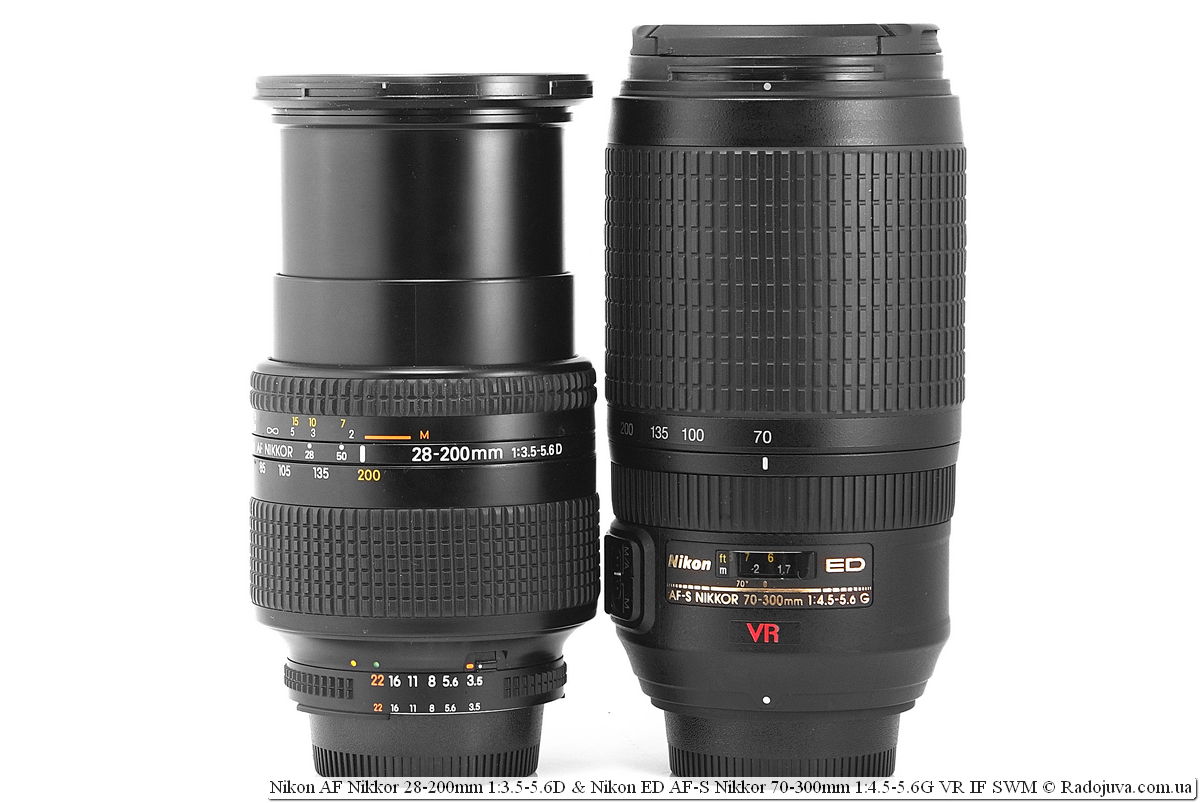
dimensions Nikon AF Nikkor 28-200mm 1: 3.5-5.6D and Nikon ED AF-S Nikkor 70-300mm 1: 4.5-5.6G VR IF SWM
Results
Nikon 70-300 VR is a good telephoto lens, the best of its kind. Perfect for Nikon FX and Nikon DX cameras.
UPDATE: On July 11, 2017, a replacement for this lens was introduced in the face Nikon VR ED AF-P NIKKOR 70-300mm 1: 4.5-5.6E.
Material prepared Arkady Shapoval. Training/Consultations | Youtube | Facebook | Instagram | Twitter | Telegram

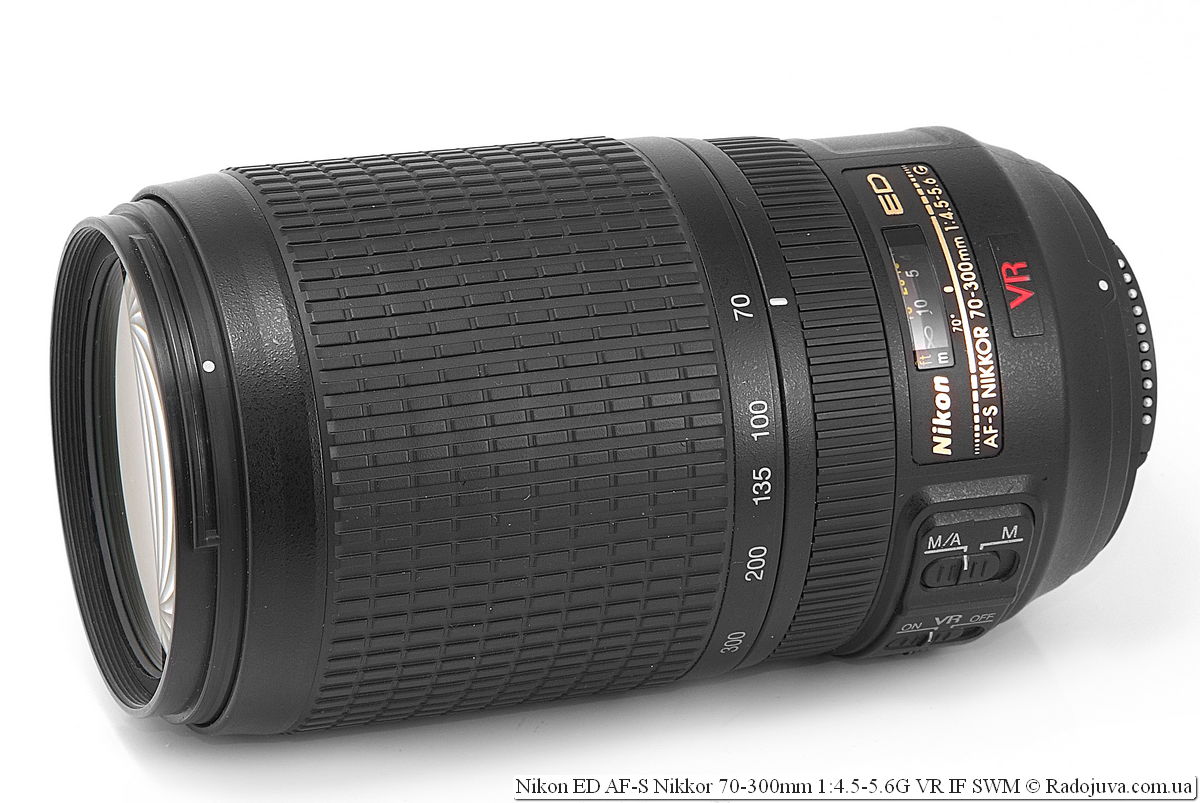
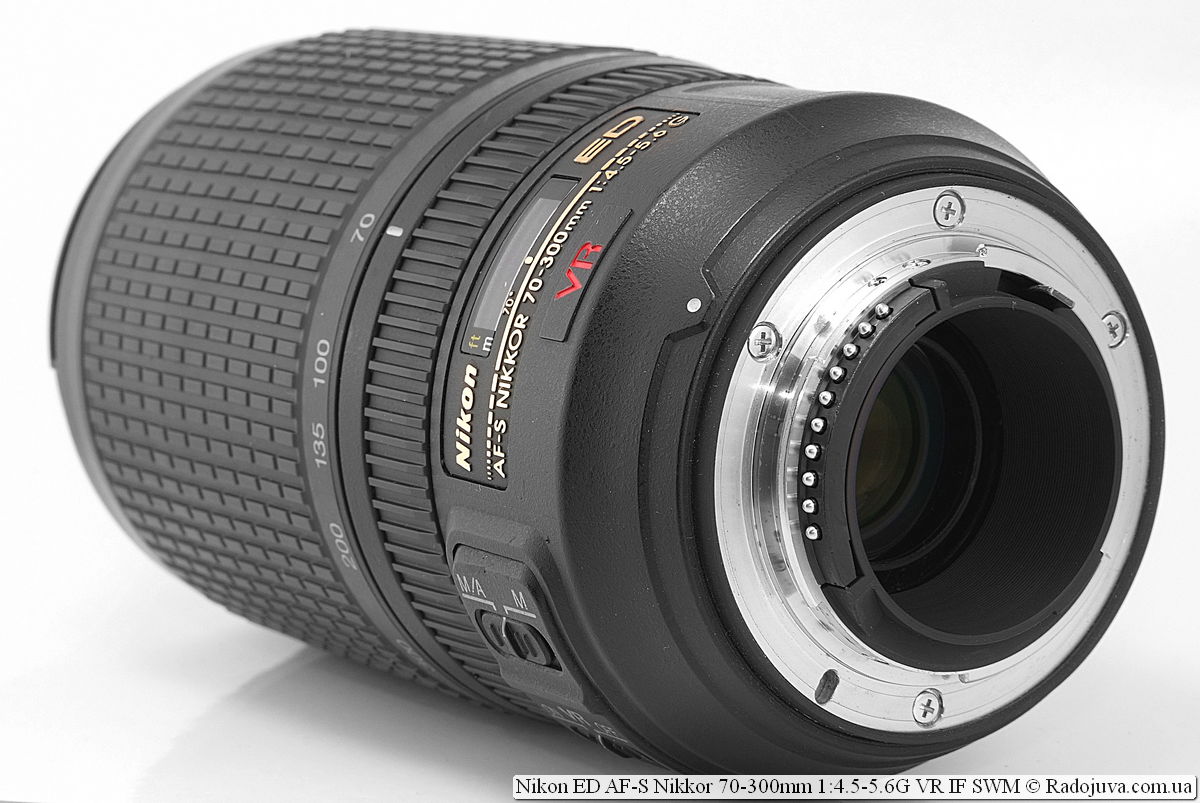
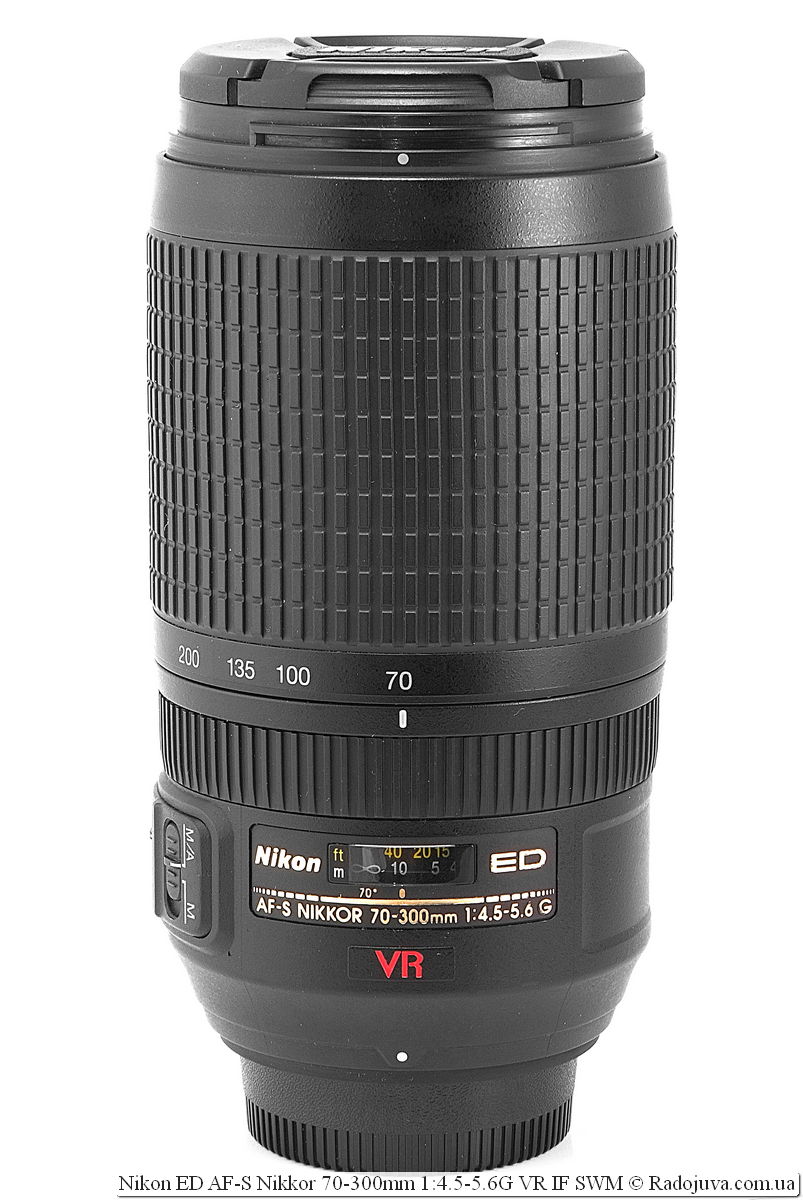
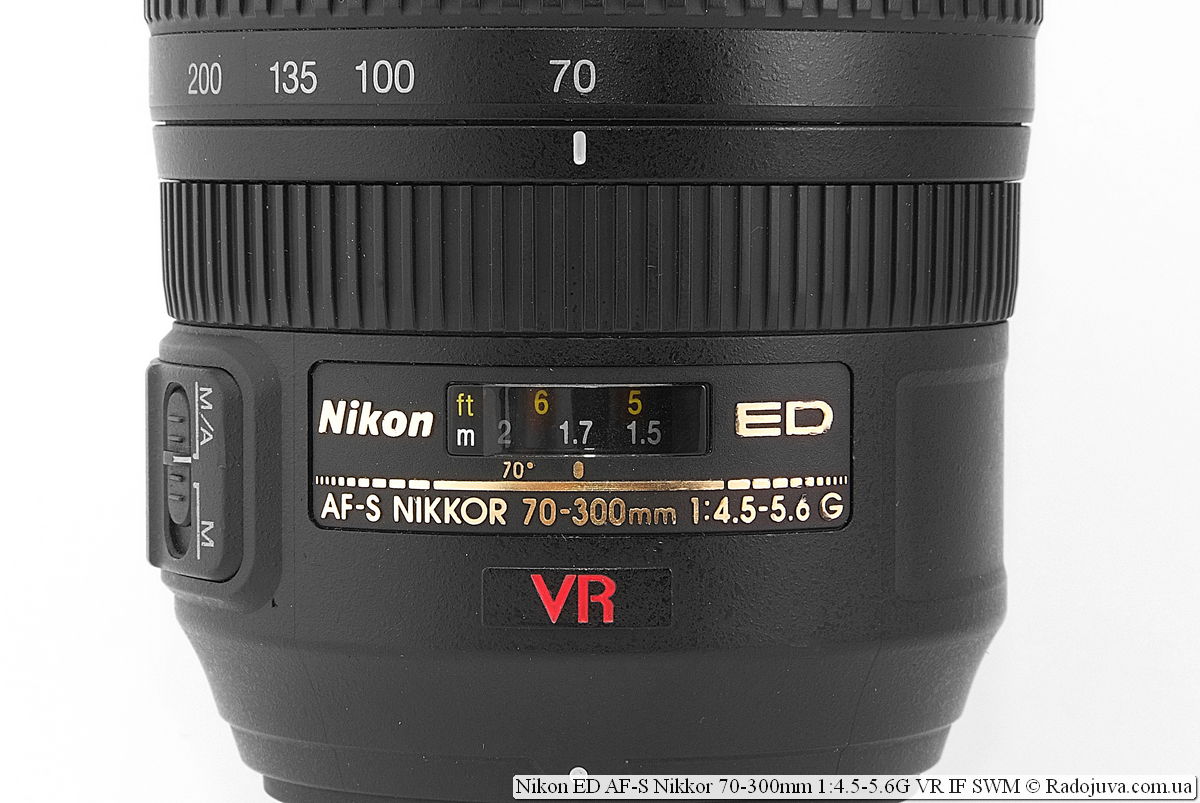
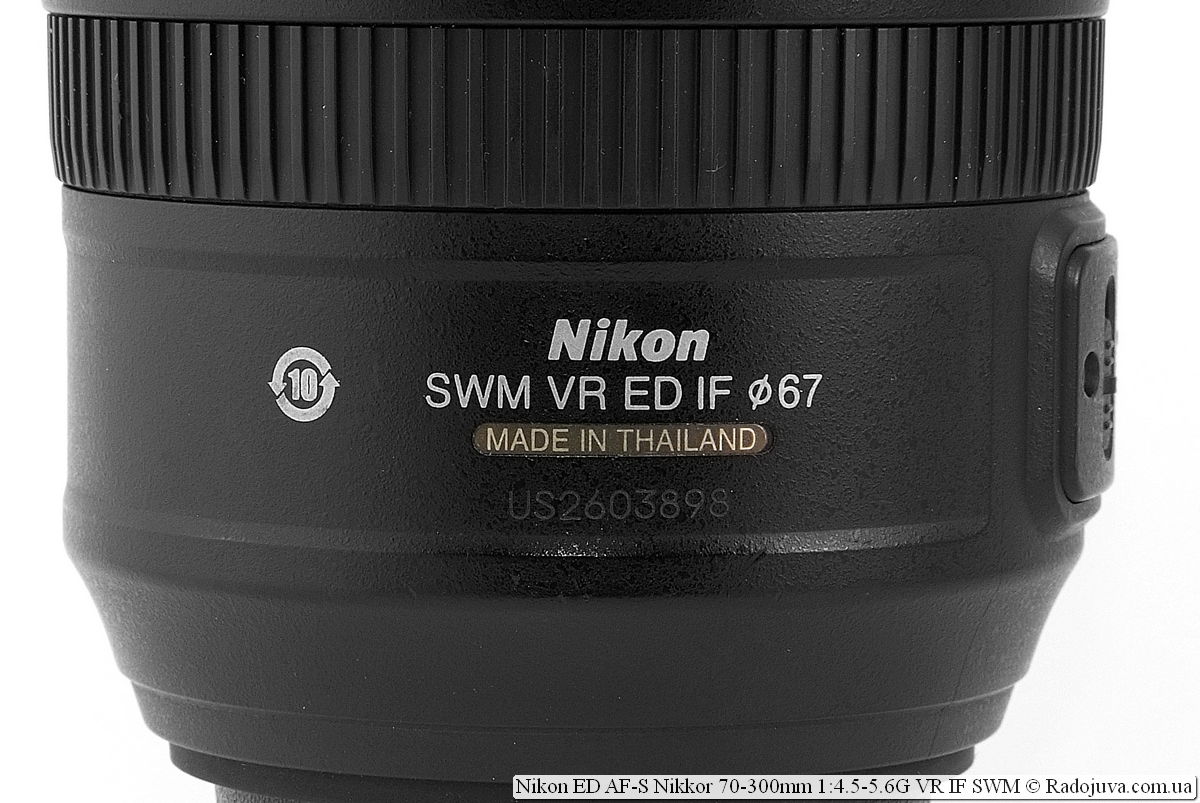
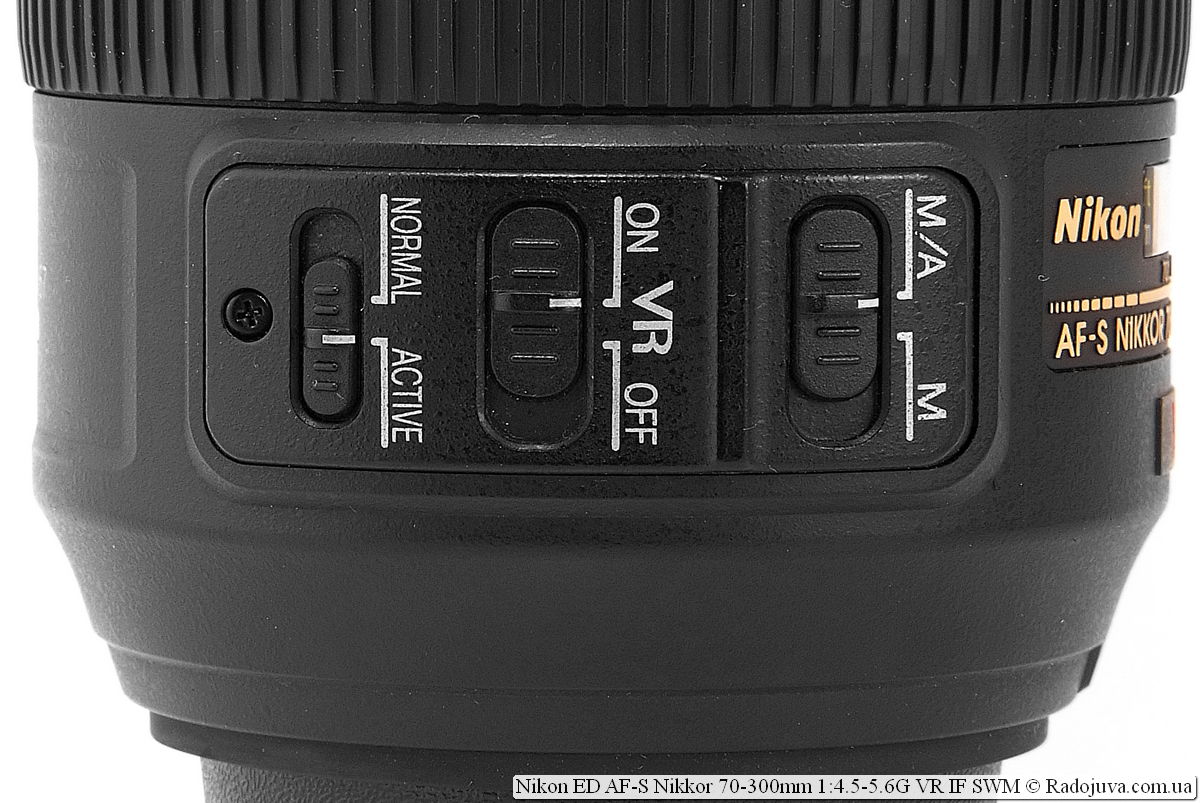
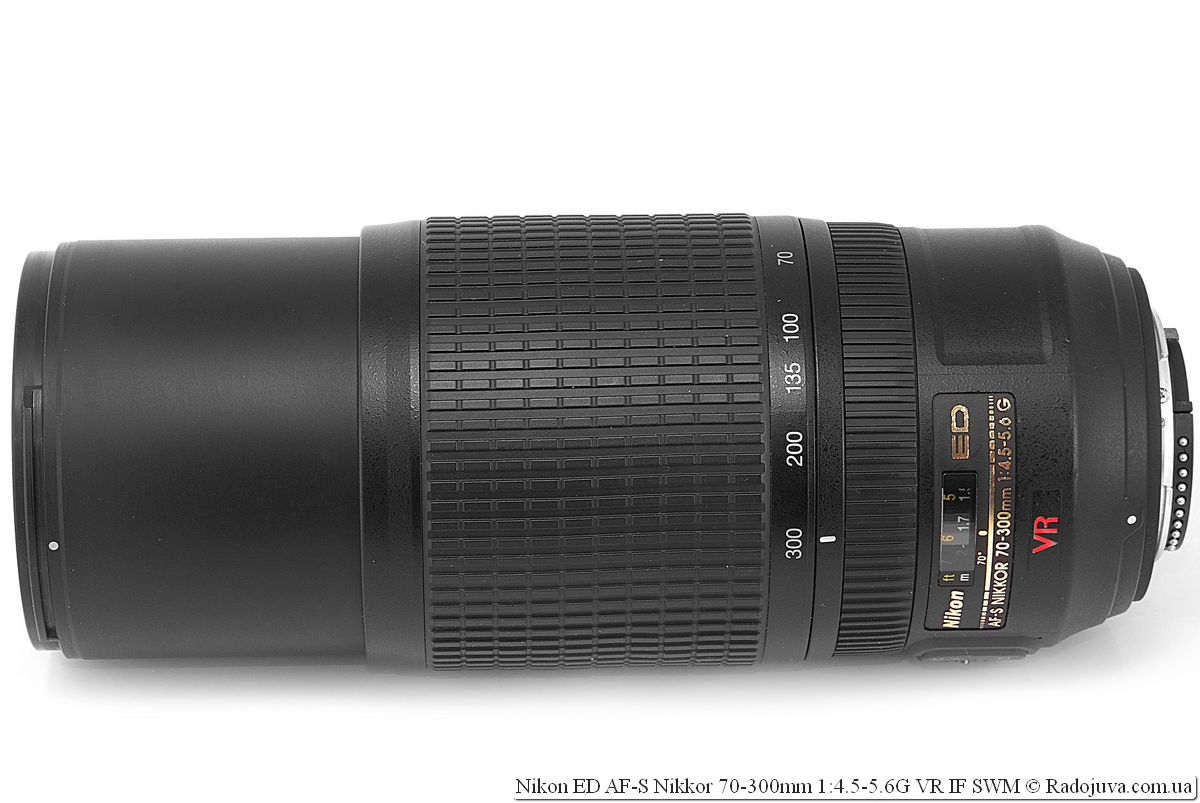
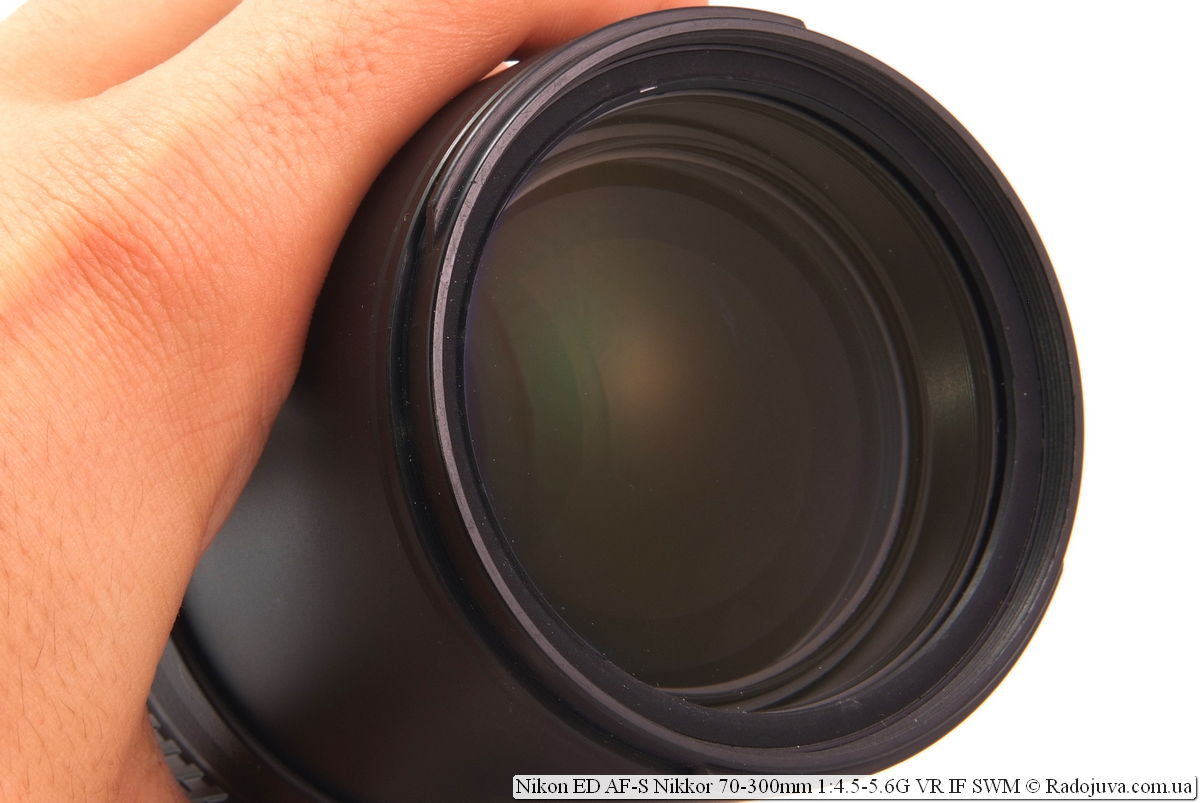
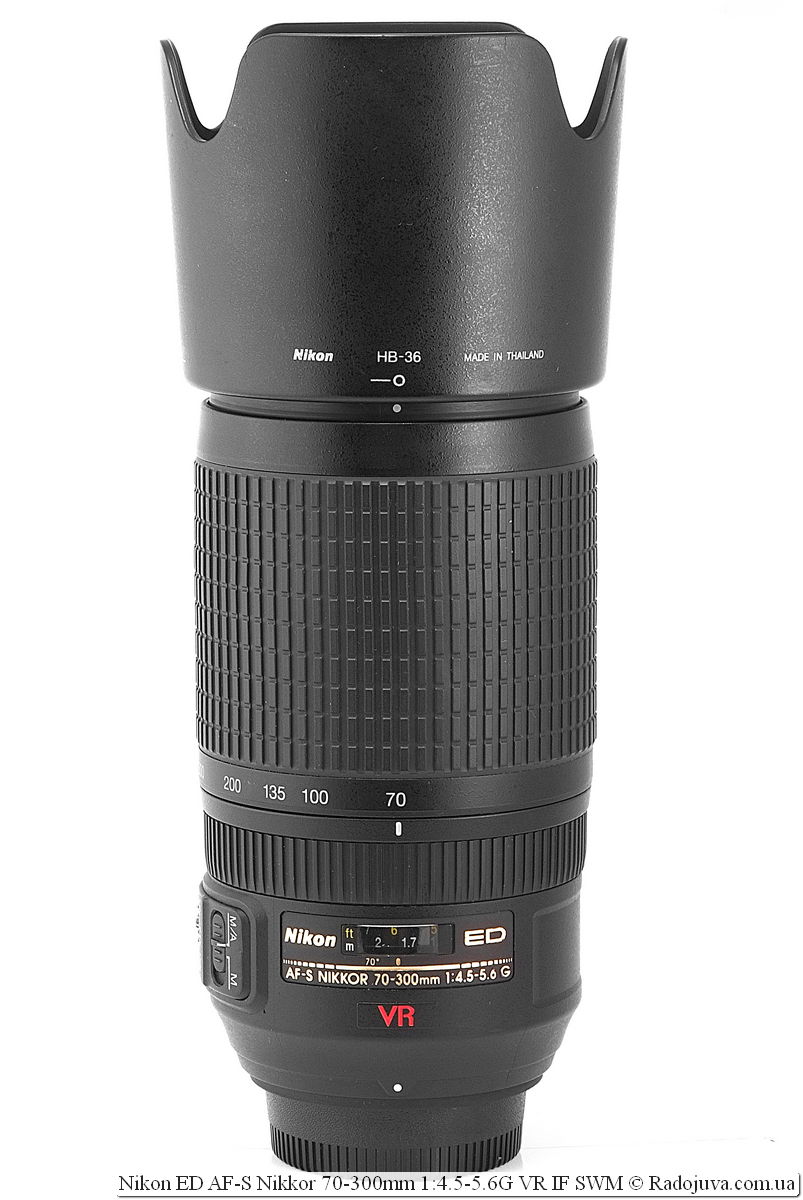


























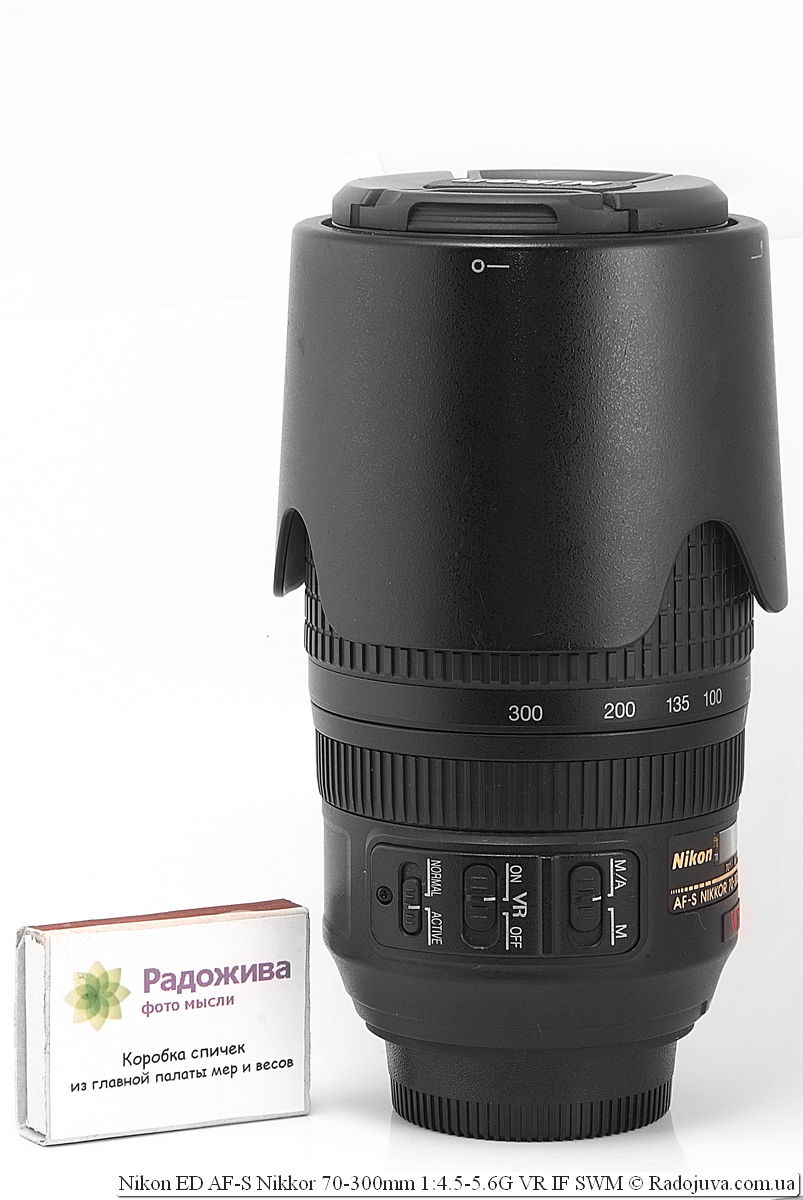
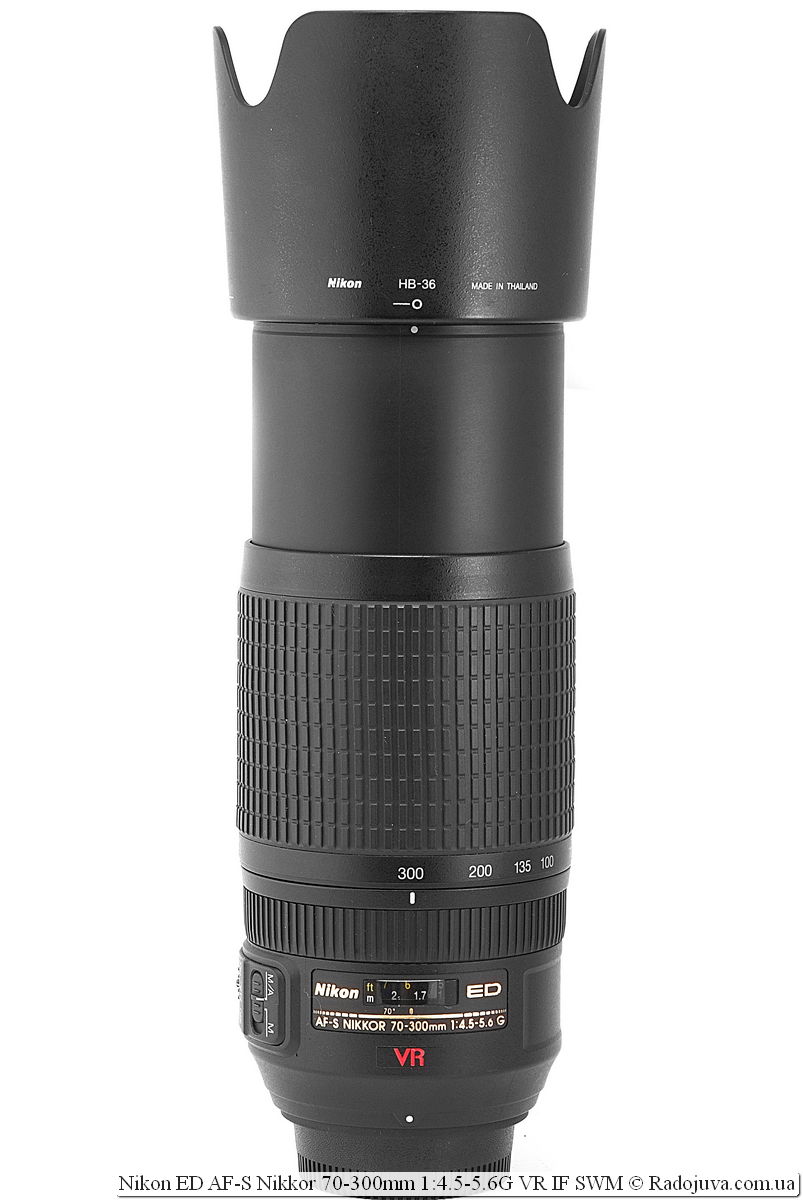
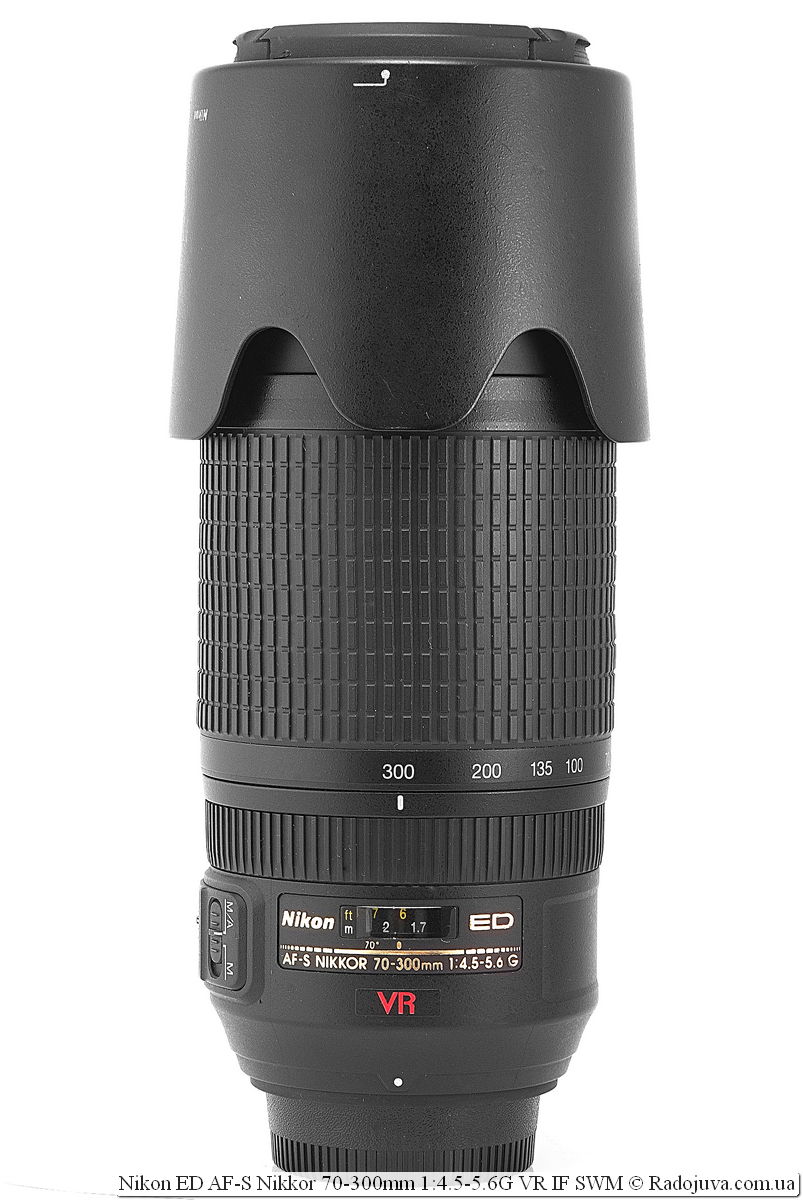
















I read somewhere that the d5100 is buggy with this lens. What could be the reason, Arkady?
Dmitry, I don’t know where you read this. I have a lens for half a year, the Nikon D5100 camera, everything works fine. Examples of photos can be viewed on my page http://vk.com/uadance.
All dance photos were shot at 70-300 or 18-105
Excellent lens, I love it, I recommend it ...
How will the same lens differ, but 55-300, is it worth it to overpay about 2 thousand for 70-300?
Very slow for reporting, nothing can be done, budget ...
I apologize, I received the answer already from the first page, I did not notice it.
thanks for the site, or rather information, I bought myself a Nikon D90 with a whale of 18-55, it’ll do for home, but I want to shoot in nature, I don’t have much money, I saw Nikon 70-300 without stabilization on sale, and 55-200 with a stabilizer, cost about the same what to take? hands do not tremble when shooting :)
Good afternoon Arkady, I am a fan of your site, in this review you wrote that you can choose Nikon 70-300mm f / 4.0-5.6D ED AF Zoom-Nikkor (as I understand it does not have a focus and stabilization motor) as a replacement for a full frame , judging by the aperture, it seems like it turns out even brighter. At a price it is about 1000 UAH cheaper than the lens in this review http://cifrovoi.com.ua/cat/ob_ektivi/nikon/10239-tech.html
Did you come across this option, have you tested it?
I didn’t fall into the hands, I met different reviews about him.
Two options for stabilization. Asset and normal. Normal compensates for jitter in both vertical and horizontal planes. Asset is only in the vertical. For shooting moving subjects with wiring.
Hello, do I have a Canon 600d? I want to buy a canon EF 75-300 mm f / 4-5.6 III! What good can you say ???
Something like the following - https://radojuva.com.ua/2012/10/obzor-canon-ef-75-300mm-f4-0-5-6-iii/
Thank you very much for your great work. I am also facing the choice of a budget telephoto lens for Nikon D7000. I choose from two options: Nikon 70-300 4.5-5.6G IF-ED AF-S VR and Tamron SP 70-300mm f / 4-5.6 Di VC USD. Indeed, many Internet resources give these lenses parity, and some give preference to Tamron. Indeed, this Tamron is a bit not a budget Tamron, as we are used to - the construct is at a very decent level, very contrasting (which Tamrons usually do not suffer from), in no review or comment I have not met a single message that the lens had a back / front - focus (which the Tamrons often suffer from), but on the contrary it was said about a fairly fast and very accurate focus. What is interesting about these lenses is that (they say) Nikon has a more pronounced sharpness in the center of the frame, while Tamron has a “restrained” sharpness in the center of the frame, but much better (than Nikon's) sharpness at the edges of the frame. In addition, tamron is said to have little loss of contrast from the oncoming sun. Moreover, there is an experience of shooting with Tamrons and there is a feeling that they "turn yellow", although they write about this Tamron that he has a good color rendering ... Dilema.
A huge request, who had experience using both lenses, what do you say? What do you advise?
Cuba, for a camera like Nikon D7100, the choice of lenses should be more careful - multi-megapixel sensors are very demanding on optics. I'm afraid the Nikon 70-300 4.5-5.6G IF-ED AF-S VR won't allow this camera. You probably need a slightly higher class lens, for example, Nikon 70-200 / 4 VR, new. I would have bought one myself, but I'm used to thinking realistically - now I shoot 93% of frames with a staff (Sigma 17-50 / 2.8 OS), 5% of frames - with a fisheye lens (Samyang 8 / 3.5), 1,5% of frames - with a portrait lens (Nikon 85 / 1.8G) and 0.5% of frames I use for telephoto shoots “supergasum” (Tamron 18-270 PZ VC). Therefore, I think that for 0.5%, well, even for 3% of frames, it is not prudent to buy a rather expensive and heavy, overall lens in the “folded” state. But, if there was a multi-megapixel matrix, the choice would be unambiguous ...
Good afternoon, Arkady. I recently bought a Nikon D5100 with a whale of 18-55 bp. Advise the telephoto to my camera.
Arkady, do you plan to review the NIKKOR AF-S 28-300mm f / 3.5-5.6G ED VR lens? I choose between him and 70-300. In my opinion, the versatility of 28-300 is better. But I would like to read your opinion.
Better take 70-300, this is a telephoto lens, which means better. I went through it myself ...
I know that all zoom lenses are worse than fixed lenses, but of the zooms, the one with a steeper “fork” is worse - in our case 70-300 is better than 28-300 mm. It's primitive. But for a blonde - that's it.
You have great reviews! You can say the best in Runet) looked everywhere) Thank you very much)
As in all forums, "suffering" begins that this lens is NOT
Allows multi-pixel arrays. Example with D800 show?
Much more megapixel :)
And everything is fine! Yes. Not 80-200 and not 70-200,
but look at the price tag, gentlemen are good!
Hello Arkady! Tell me which zoom lens is preferable for shooting sports (rugby, football). Nikon d3100
Typo:
“Sense in acquiring” (wrong) = “Sense in acquiring” (correct)
Well done. Nobody, as you see, is rigging.
I am faced with the choice on the D90 which is better: Nikon 70-300 4.5-5.6G IF-ED AF-S VR or Nikon 70-300mm f / 4.0-5.6D ED AF Zoom-Nikkor?
Both are exactly the same in the picture, by design, DEDA does not have a stabilizer and a screwdriver drive, and DED is 2 times cheaper (if used).
Thanks, auto focus on DEDA is very interested, is it the same fast? Nikon 70-300 4.5-5.6G IF-ED AF-S VR acquired on occasion, now I think whether it makes sense to exchange it for DEDA, money can be decent saved.
And what do you dislike about the Nikon 70-300 4.5-5.6G IF-ED AF-S VR?
it’s better not to save on such things, I consider 70-300 with a stub to be the best budget TV set from Nikkor for full-length and crop cameras
Hello, help me decide which lens to choose: I have a D90 and a whale lens 18-105 I want to buy one of three long-range
Nikon AF-S Nikkor 28-300mm f / 3.5-5.6G ED VR
Nikon Nikkor 18-300mm f / 3.5-5.6 ED VR
Nikon AF-S VR Zoom-Nikkor 70-300mm f / 4.5-5.6G IF-ED (4.3x)
I understand that you did not use the first two, but if you chose yourself, which one did you choose?
The Nikon AF-S VR Zoom-Nikkor 70-300mm f / 4.5-5.6G IF-ED is generally designed just for shooting in the television range, and the 28-300 and 18-300 are universal with a huge zoom ratio.
I have a choice of 18-300, or to my 18-105 buy 70-300.
As I understand it, the 18-300 has the advantage of versatility. A bunch of 18-105 and 70-300 will have an advantage in quality in the television range. Correctly?
Igor, after reading the answer of Arkady, read my answer, the continuation of Elvira.
Which of these two is better?
Nikkor DX 55-300mm f / 4.5-5.6G ED VR AF-S (JAA814DA)
Nikkor AF 70-300mm f / 4-5.6G Black
Does it make sense to overpay for the first? I have d90, so the second will be with autofocus.
better first he has a stub, and that says a lot,
tell me Arkady, when the stub is working at 70-300 and when focusing in the lens itself, clicks are heard whether this is a normal phenomenon or not, thanks.
I have a Nikon d3100 please a little more beautiful than vibrati shchob von more rosmitiy buv.tsіna bzitsko 2000 UAH.
Nikkor 35 1.8g or better 50 1.8g
For Nikon D3200 worth taking?
take Misha, if finances allow, this glass is the best from Nikon in its price range, I use this device paired with 5100, it is completely satisfied, sharpness, fast focusing, very good stabilizer, good color rendering.
Arkady, thank you for the article! Here, who cares, on the Nikon website they explain the difference between the normal / active stabilization modes. https://nikoneurope-ru.custhelp.com/app/answers/detail/a_id/8854
Hello Arkady, please tell me if you put this lens on a cropped camera (for example, d3100 or d5100), will it visually zoom closer than the Nikon dx 55-300 mm lens or will it show identically? On this simulator http://imaging.nikon.com/lineup/lens/simulator/ shows that the picture is the same.
Thank you.
Tell me about the choice of the telezoom for the NIKON D7000 camera.
I am considering options:
Nikon 70-300mm f 4.5-5.6G IF-ED AF-S VR Zoom-Nikkor
и
Nikon ED AF Nikkor 80-200mm 1: 2.8D (MKII) (used)
Behind the first, advantages in weight, dimensions, stubs, a larger range of FR.
The second option (used) is safer, more professional, lighter, I think the picture quality will be better; and it looks and feels very solid. True, it is heavy and dimensional ...
The price of Nikon 70-300mm f 4.5-5.6G (new) and Nikon ED AF Nikkor 80-200mm 1: 2.8D (MKII) (used) is about the same.
Who will have any thoughts on this? I will be glad to any opinion, because I myself can’t decide.
if you are catastrophically lacking focal lengths from 200-300 — take a telephoto camera, and 80-200 is a beautiful, light-strong, zoom portrait, although it’s a trombone that has migrated from film to digital.
Hello!! please tell me i have nikon d60, it’s suitable for him
Nikkor AF 70-300mm f / 4-5.6G Black lens,
Nikkor 70-300mm f / 4.5-5.6G IF-ED,
Nikon 70-300mm f / 4.0-5.6D ED AF Zoom-Nikkor ?????
This is all the same lens, AF type. It does not fit, there will be no auto focus. Look at the Nikon 55-200, Nikon 55-300
SW Arkady! please tell me Nikon D3200 is better to take immediately with a whale lens or take the carcass and Nikkor 55-200mm f / 4-5.6G AF-S DX VR. Thanks.
PS Lover
I will make my 5 cents. I bought a subject for a friend by his order, and of course I played a little myself. Impressive of course, I confirm everything written by Arkady.
But for myself on the D5100, I saved it, I took the Nikon 55-200mm f / 4-5.6G IF ED AF-S DX VR Nikkor because I don’t guess the transition to a full frame.
First impressions comparisons:
-The stabilizer operation is similar (if not the same), I also did not notice the difference in the modes for 70-300.
-Focus 55-200 is slightly slower than 70-300, but no less tenacious.
-The sharpness of the 55-200 throughout the focal length is excellent (F => 8), while in the 70-300 the upper range of the comfortable (for handheld) focal length ends at 250-270
-When zooming in on 70-300, I didn’t immediately like that a draft is appearing in the viewfinder, in 55-200 this effect is much less.
-Bokeh in 55-200 does not lose 70-300, a pleasant, slightly twisted.
Yes, why am I writing all =) If you are an amateur, and the carcass is not full-frame and is not expected to be on the horizon of a full frame, then I think that you should not overpay about 10t. for a full frame and 50-70 millimeters of focal length. In addition, the 55-200 is much more compact and therefore lighter. To the advantages of 55-200 I will also take the fact that the thread for the 52mm filter is the same as on the whale.